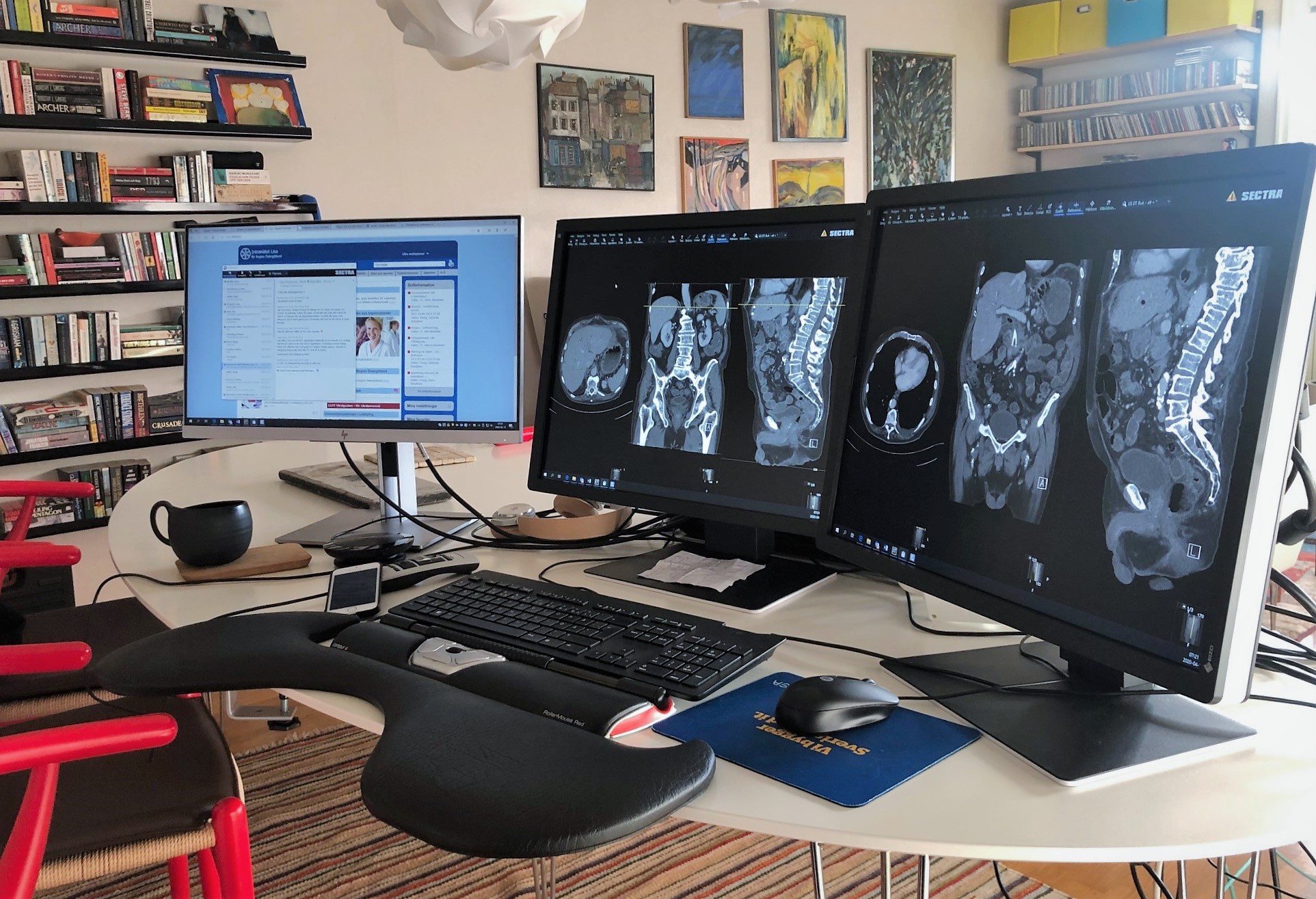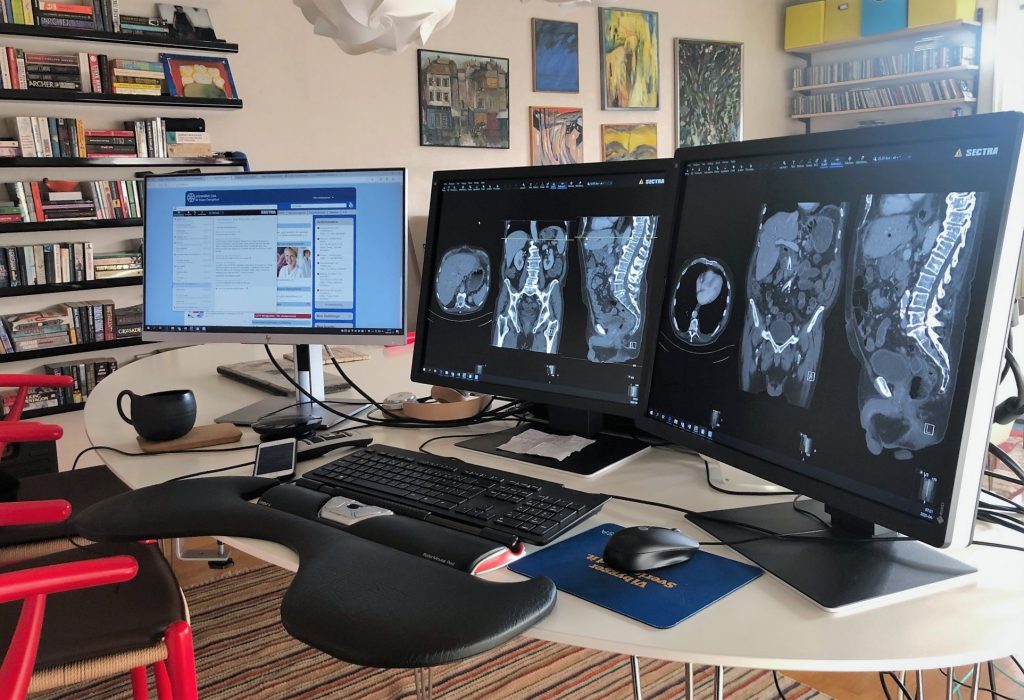Sectra: How has your workload changed due to the coronavirus pandemic?
Jenny: As an abdominal radiologist, I work mostly towards urologists and surgeons. They have all experienced a significant drop in elective surgery—some by as much as 75 percent—resulting in less pre- and post-operative examinations for me as a radiologist.
Annual follow-ups for elderly patients, age 70 and above, have also been postponed when possible to minimize the risk of infecting this high-risk group of patients. In addition, we have seen a slight decline in the number of cases brought up at multi-disciplinary team conferences.
On a different note, many of us radiologists have been directly affected due to the cancellation of all planned training and educational sessions on account of the coronavirus pandemic. So basically, most radiologists in my division have now been available for clinical service—I do not think the abdominal division has ever been so well staffed as we have been the last couple of weeks!
All in all, this has resulted in a lower workload and higher staffing—at least for us abdominal radiologists at this moment. It has enabled us to reduce the use of external radiologists and given us an opportunity to prepare for a potential “storm” to come in the form of rising numbers of patients combined with increased sick leave among staff at the radiology department.
How many of the radiologists need to work from home now?
In the abdominal radiology division, about 40 percent have been working from home for the past four weeks. We have divided the team into two groups, one of which works from home and the other onsite at the hospital, and then we swap.
There is in total seven divisions at the radiology department in Linköping. Some divisions are more affected than others by the pandemic, in terms of the workload and the composition of this workload. The radiographers and nurse assistants at the x-ray and CT machines in the emergency department and at the portable modalities at the intensive care units who are working with SARS-CoV-2 infected and potentially infected patients have a vastly changed work environment that involves the use of personal protective equipment. They are also experiencing a higher workload. The same goes for my colleagues handling the interventional examinations, ultrasound, etc.
As a radiologist, are you in any way involved in the COVID-19 diagnostics?
Here in Linköping, it has been agreed that patients with respiratory symptoms should undergo a chest x-ray as a baseline exam.
Within the radiology community, the use of a chest CT for diagnosis of COVID-19 is being debated. Currently, we do not use chest CT for diagnosis in our region. However, I have heard rumors that there is a radiology department in a nearby region that uses chest CT as a diagnostic tool for COVID-19, but I have not had this rumor validated.
So, to the most important question, what is your workplace at home like?
It is actually very similar to the one I have at the hospital, and it is the standard set-up that our IT department provides us with. It has three monitors, a dictaphone for speech recognition, and the workstation is connected to the centralized PACS via a secure VPN tunnel. To ease the strain on my wrists, I have brought an arm support from the office that connects to my desk, which improves my work position significantly.
We use a regular home fiber connection, nothing special, and I think it works fine, although the performance at the hospital overall is more stable. The only drawback now is that we need to eat our meals at the kitchen bar table, since I have occupied the dining table with my workstation.



